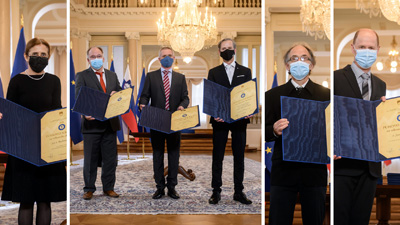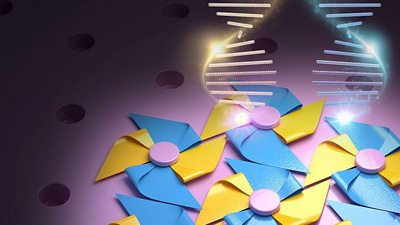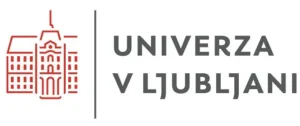News

Prof. dr. Samo Kralj received Zois Certificate
This year’s winners of the Slovenian highest awards for science were presented on December 1, 2020, in a documentary Highlights of Slovenian Science through the eyes of award winners for outstanding achievements 2020. One of the award winners is prof. dr. Samo Kralj from the Condensed Matter Physics Department who received the Zois Certificate of Recognition for important research achievements in the field of soft matter physics. Congratulations!
Short articles
1. Slobodan Žumer, “Electroshock tuning of photonic crystals”, Nature materials, 2020, 19, 1, 6-7.
2. Žiga Snoj, Igor Serša, Urša Matičič, Erika Cvetko, Gregor Omejec, “Nerve fascicle depiction at MR microscopy and high-frequency US with anatomic verification”, Radiology, 2020, 297, 3, 672-674.
3. Francesca Serra, Uroš Tkalec, Teresa Lopez-Leon, “Editorial: topological soft matter”, In: Topological soft matter, (Frontiers research topics), Frontiers Media, 2020, 4-5.

Article in Advanced Materials
Dr. Simon Čopar form the Faculty of Mathematics and Physics, University of Ljubljana, and dr. Uroš Tkalec from the Condensed Matter Physics Department at the »Jožef Stefan« Institute in collaboration with Korean researchers led by Dong Ki Yoon have published article Periodic Arrays of Chiral Domains Generated from the Self-Assembly of Micropatterned Achiral Lyotropic Chromonic Liquid Crystal in the ACS Central Science. The article includes both the experimental demonstration and theoretical explanation of the phenomena and is an important contribution towards practical use of chiral structure made from water-based non-chiral LC-molecules. It was highlighted on the front page of the November issue of the journal, which also included a commentary by Oleg Lavrentovich from Kent State University.
Published conference contribution (invited lecture)
1. Sarangi Venkateshwarlu et al. (11 authors), “Relaxor behavior and electrothermal properties of Sn- and Nb-modified (Ba, Ca) TiO3 Pb-free ferroelectric”, In: The Fourth Annual JMR Issue to Promote Outstanding Research by Future Leaders in Materials Science, (Journal of materials research 35 8), 2020, 1017-1027.
Published conference contributions
1. Janez Štrancar, Špela Stres, “Regulated toxicity-testing: spinning out a company in a rapidly changing market”, In: 13. ITTC, 13th International Technology Transfer Conference, 8 October 2020, Ljubljana, Slovenia, Proceedings of the 23rd International Multiconference Information Society (IS 2020), volume E, Institut “Jožef Stefan”, 2020, 38-42.
2. Bojan Cestnik, Rebeka Kovačič Lukman, Andreja Abina, Andrej Flogie, Samo Repolusk, Maja Vičič Krabonja, Tanja Batkovič, Adem Kikaj, Ivan Boshkov, Nita Hasani, Maja Kurbus, Matevž Ogrinc, Jaka Progar, Nika Zagorc Okorn, Sabina Petek, Aleksander Zidanšek, “Development and implementation of a decision support expert system for monitoring sustainability-related competences at the secondary school”, In: 15th SDEWES Conference, Conference on Sustainable Development of Energy, Water and Environment Systems, September 1‐5, 2020, Cologne, Germany, Proceedings, SDEWES, 2020, 0681.
3. Aleksander Zidanšek, Tanja Batkovič, Uroš Puc, Andreja Abina, “Ground-penetrating radar measurements for cultural heritage”, In: 15th SDEWES Conference, Conference on Sustainable Development of Energy, Water and Environment Systems, September 1‐5, 2020, Cologne, Germany, Proceedings, SDEWES, 2020, 0684.
4. Andreja Abina, Uroš Puc, Aleksander Zidanšek, “Terahertz technology for the characterization of waste materials in construction”, In: 15th SDEWES Conference, Conference on Sustainable Development of Energy, Water and Environment Systems, September 1‐5, 2020, Cologne, Germany, Proceedings, SDEWES, 2020, 0696.
5. Tanja Batkovič, Bojan Cestnik, Aleksander Zidanšek, Andreja Abina, “Competence model for factories of the future”, In: 2nd International Conference on Technologies & Business Models for Circular Economy, Proceedings, Maribor Faculty of Chemistry and Chemical Engineering, 2020, 159-173.… Read the rest “Published conference contributions”
